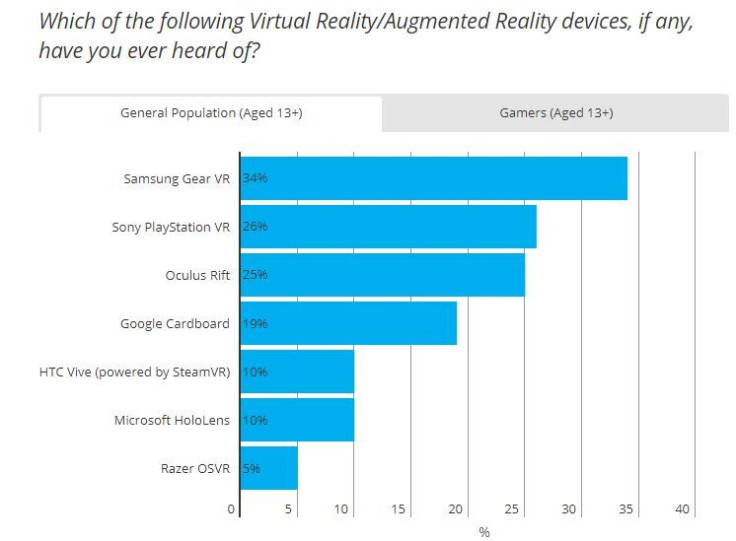Microsoft Begins Selling Mixed Virtual Reality Headsets From HP, Acer

Microsoft teased its formal jump into virtual reality earlier this year, and now, its upcoming headsets are available for sale.
On Microsoft’s store, two listings are available for developer versions of its Mixed Reality headsets. An Acer version of the virtual reality headset is available for $299, while an HP-produced counterpart is available for $329.
Read: Microsoft Announces Motion Controllers For Mixed Reality Headsets
Internally, both models feature many of the same basic specifications. On their bodies, they both rely on a 1440 x 1440-pixel, 2.9-inch display and feature inside-out tracking for wireless positional awareness. With this feature — which has become an increasingly popular add-on for upcoming virtual reality headsets — you don’t need to install external sensors around a room to keep track of where you’re standing when you use the headset. While both models are touted as being for development use, they’re still available for anyone to purchase.
Microsoft Mixed Reality Headset Specifications
Two high-resolution liquid crystal displays at 1440 x 1440
2.89” diagonal display size (x2)
Front hinged display
95 degrees horizontal field of view
Display refresh rate up to 90 Hz (native)
Built-in audio out and microphone support through 3.5mm jack
Single cable with HDMI 2.0 (display) and USB 3.0 (data) for connectivity
Inside-out tracking
4.00m cable
For developers, they’ll also need a relatively high-end computer in order to work with the headset. Both headsets have recommended system requirements that include an Intel Core i7 processor, a Nvidia GTX 980 or GTX 1060 graphics card and 16GB of RAM. Microsoft previously touted that its headsets wouldn’t need an expensive computer or demanding specifications, so it’s likely that these developer recommendations are closer to the recommended than minimum end of the spectrum.
The headset program, which’ll see partners like HP, Asus and Lenovo build models with Microsoft features, was formally announced by Microsoft at CES 2017 earlier this year. For Microsoft, the program also represents the company’s first jump into consumer-grade virtual reality hardware. While Microsoft previously released its HoloLens headset, the $3,000 developers kit makes it a de facto exclusive option for companies or designers.
Windows has already been the primary platform for VR gaming and development — Apple only recently added VR development features to its macOS operating system — but with the mixed reality headsets, the company wants to maintain a similar presence with its own hardware. The platform’s hardware and software ambitions are still in their relatively early stages, but Microsoft plans to release controllers that could potentially be used for apps or gaming.
Microsoft’s mixed reality headsets will also be the first of several upcoming virtual reality headsets that look to make significant performance or feature improvements for consumers.
On the mobile end, Google teased its upcoming Daydream headset at its Google I/O developer conference earlier this year. The headset will have soon-to-be standard features like automatic tracking, but Google touted that it won’t need to be paired to a smartphone or desktop. Instead, the headset will be an entirely standalone unit.
Read: Resident Evil 7’s Virtual Reality Success Was “Big Surprise” To Sony
HTC’s Vive headset and the Oculus Rift have been the primary carriers for high-end consumer VR experiences, though the price tag for each has largely made them niche products. Both companies have been coy about whether or not a new headset is in the works, though the Vive has seen a steady stream of first-party and third-party accessories that include wireless tethering and object trackers.
But at the moment, this push into VR also reflects the platform’s difficult current tweener stage — users generally are familiar with and don’t need to be educated about VR or augmented reality, but what can companies do to make it viable and not just be a novelty?

In a recent poll from Nielsen, general users were most aware of major headsets like the Samsung Gear VR and PlayStation VR. But for companies like Microsoft, the difficulty now comes from convincing users that VR can be a useful and affordable part of their daily life.
© Copyright IBTimes 2025. All rights reserved.



















